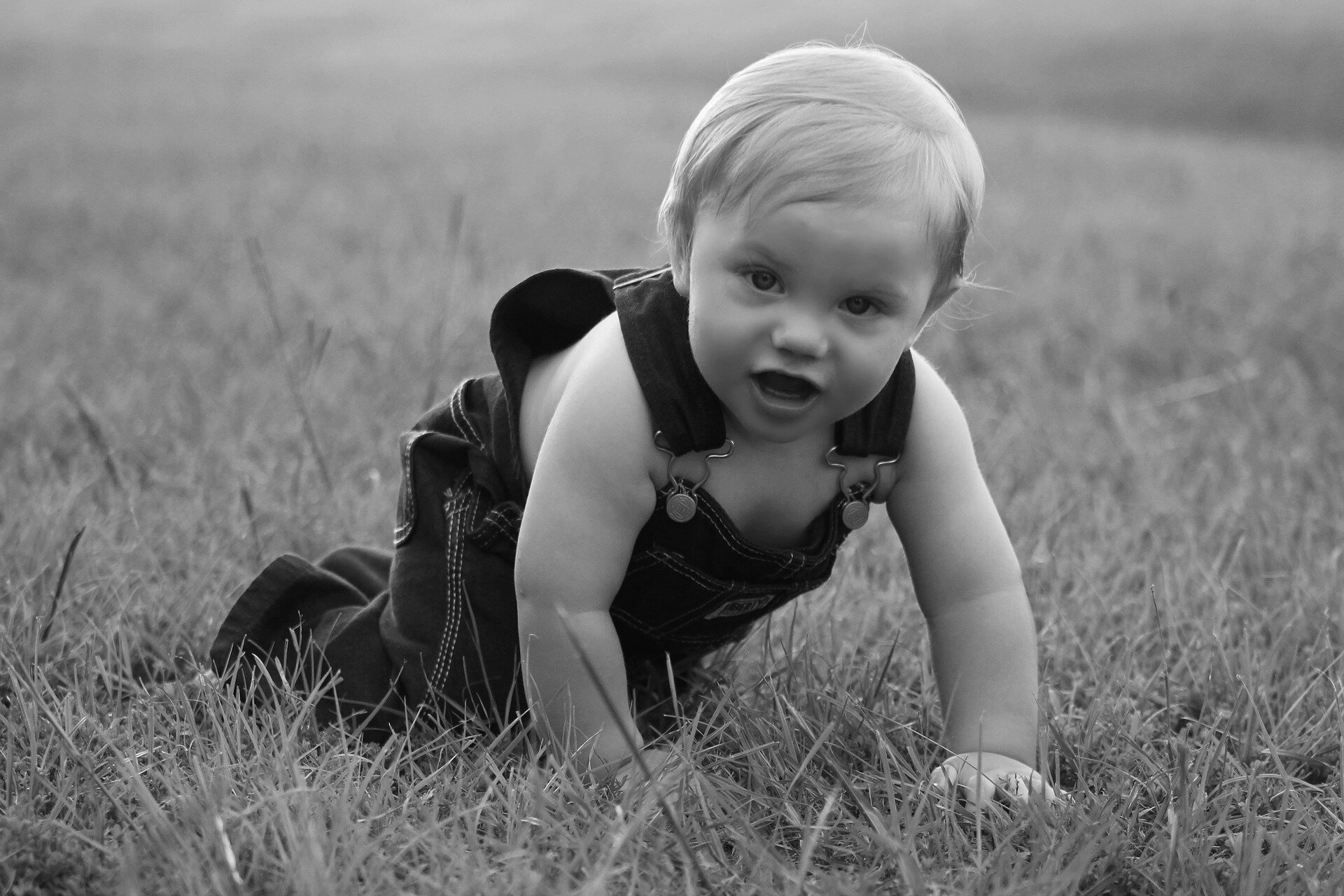Crawling is More Important than You May Think…
Written by Erika Shumock, PT, DPT, Pediatric Physical Therapist and Founder of Mastering Milestones LLC. @MasteringMilestones (IG)
Reciprocal or classic hands-and-knees crawling is when your baby bears weight on his hands and knees and moves one arm + the opposite knee forward at the same time. This skill typically develops between 7-9 months of age. Some children master this milestone earlier and some a bit later. Crawling on hands-and-knees is an important milestone that you do not want to skip – despite what you may have read on the internet! Crawling helps build strength in the neck, upper & lower extremity, and trunk muscles that are important for later developmental skills such as pulling to stand and walking. It enhances vision & depth perception, develops midline orientation, and contributes to the palmar arches of the hand necessary for handwriting & fine motor skills. It also helps form connections between the left and right sides of the brain that are necessary for bilateral coordination activities such as walking, skipping, climbing, and riding a bike.
Before your child can begin reciprocal crawling on hands-and-knees, there are a few prerequisites:
Press up on palms (elbows extended) during tummy time and reach for toys with each hand:
This demonstrates good upper extremity strength and weight shift ability which are important skills for crawling.
Roll back-to-belly and belly-to-back:
This demonstrates adequate trunk strength important for independent sitting and lower extremity dissociation important for transitioning into the hands-and-knees crawling position.
Pivot in a circle on tummy in both directions:
This is your baby’s first time shifting his weight to each side without rolling. It also helps strengthen the pelvic & trunk muscles that provide stability during reciprocal crawling.
Transition into/out of the hands-and-knees crawling position:
Initially, your baby will transition into/out of hands-and-knees from his tummy. As your baby gets stronger and becomes more of a ‘functional sitter’ then your baby will transition into/out of hands-and-knees from sitting.
Rock on hands-and-knees:
Your baby will begin to rock forward/backward, side-to-side, and on diagonals to practice stability during weight shifting prior to crawling.
If your baby is not yet crawling, there are some great activities to help set your baby up for success! This includes limiting time spent in containers (i.e. bouncers, swings, jumpers, etc.) and providing lots of opportunities for floor play! Being on the floor provides free space for your baby to move and explore his environment. Although your baby needs ample time on his tummy, it’s important that your baby spend some time in all positions including on his back and in side-lying. When lying on his back, you can encourage your baby to reach for his feet and kick with his legs which will help develop antigravity core strength. Playing on each side is a great position to develop trunk strength and assist with independent rolling. Once your baby can reach for toys on his tummy, I would encourage you to place toys all around him, rather than just in front of him, to encourage weight shifting, reaching, and pivoting. Once your baby is sitting independently, you can introduce side sitting, a position that will assist your child in transitioning out of sit onto his hands and knees. Around this same time, you can also practice kneeling at a stable surface to strengthen the hip muscles necessary for classic hands-and-knees crawling.
If your baby loves to stand and is showing signs of wanting to walk prior to crawling, I would encourage you to not rush the developmental process. Continue to provide your child with ample floor time and supervised climbing opportunities so he can reap the benefits of crawling.
If you have an older child who skipped crawling and went right to walking, he can still benefit from crawling now! You can incorporate crawling into obstacle courses and/or have your child crawl through tunnels. It’s never too late to start practicing.
Bottom Line: Reciprocal crawling on hands-and-knees is an important milestone that you do not want to skip. It provides the foundational skills necessary for later development. Set your baby up for success by incorporating intentional play activities that promote crawling into your daily routine. Try not to rush the developmental process, and remember, everyone can benefit from crawling - it’s never too late to start practicing!
About the Author
Erika Shumock, PT, DPT is a pediatric physical therapist and founder of Mastering Milestones LLC, located in Charleston, South Carolina. She received her Bachelor’s degree from Pennsylvania State University and earned her Doctorate of Physical Therapy (DPT) from Temple University in Philadelphia, PA.
She has experience working with children in a variety of settings including early intervention, school-based, & outpatient clinics and treating children with a variety of musculoskeletal, neuromuscular, & genetic conditions. Through her experiences, she has become very passionate about infant and toddler development. She specializes in the assessment and treatment of children birth to five years old helping those with developmental delays, torticollis, plagiocephaly, postural deficits, gait disorders, and coordination impairments. In addition to Physical Therapy services, she provides Consultations that focus on education, prevention, & wellness and Monthly Motor Milestone Check-ins to ensure baby’s motor development is on track.





















